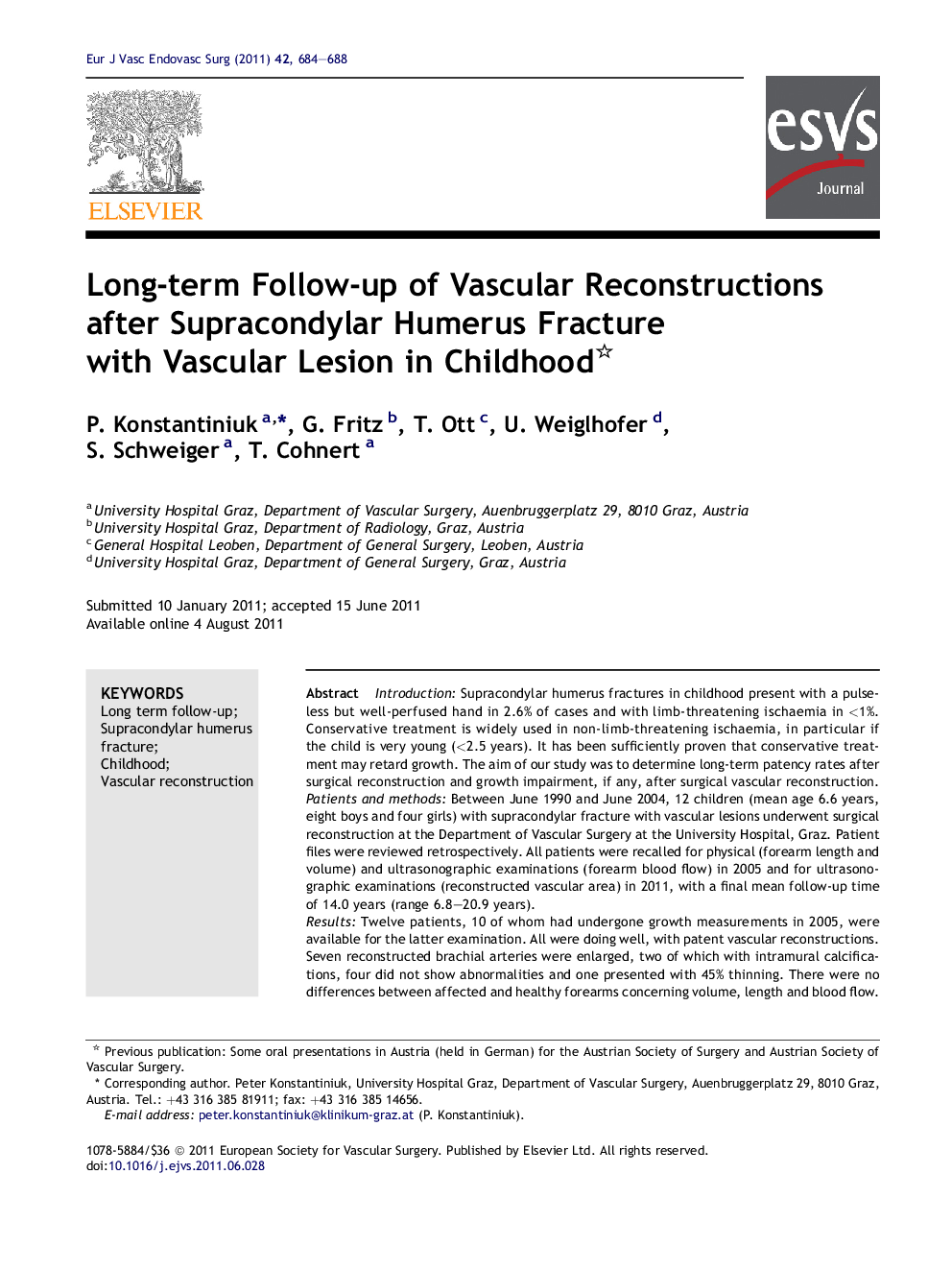| Article ID | Journal | Published Year | Pages | File Type |
|---|---|---|---|---|
| 2913057 | European Journal of Vascular and Endovascular Surgery | 2011 | 5 Pages |
IntroductionSupracondylar humerus fractures in childhood present with a pulseless but well-perfused hand in 2.6% of cases and with limb-threatening ischaemia in <1%. Conservative treatment is widely used in non-limb-threatening ischaemia, in particular if the child is very young (<2.5 years). It has been sufficiently proven that conservative treatment may retard growth. The aim of our study was to determine long-term patency rates after surgical reconstruction and growth impairment, if any, after surgical vascular reconstruction.Patients and methodsBetween June 1990 and June 2004, 12 children (mean age 6.6 years, eight boys and four girls) with supracondylar fracture with vascular lesions underwent surgical reconstruction at the Department of Vascular Surgery at the University Hospital, Graz. Patient files were reviewed retrospectively. All patients were recalled for physical (forearm length and volume) and ultrasonographic examinations (forearm blood flow) in 2005 and for ultrasonographic examinations (reconstructed vascular area) in 2011, with a final mean follow-up time of 14.0 years (range 6.8–20.9 years).ResultsTwelve patients, 10 of whom had undergone growth measurements in 2005, were available for the latter examination. All were doing well, with patent vascular reconstructions. Seven reconstructed brachial arteries were enlarged, two of which with intramural calcifications, four did not show abnormalities and one presented with 45% thinning. There were no differences between affected and healthy forearms concerning volume, length and blood flow.ConclusionsOur data emphasise that surgical reconstruction is effective in terms of blood supply and growth. In cases with interposition of greater saphenous vein or venous patch plasty, we found a high risk for development of enlargements. We suggest that these patients be followed periodically, with ultrasound studies, to detect aneurysms and/or thrombotic changes as early as possible.
